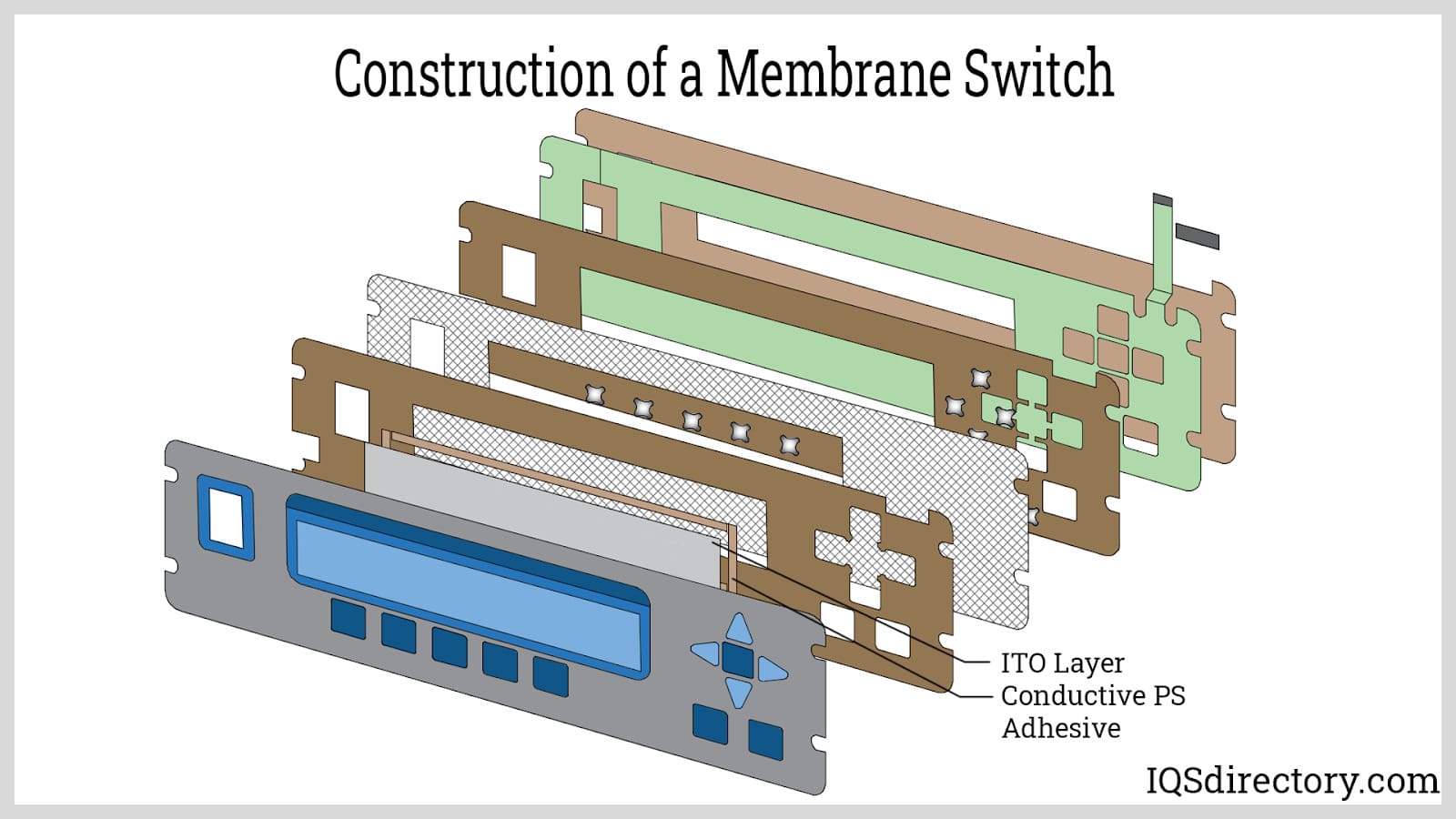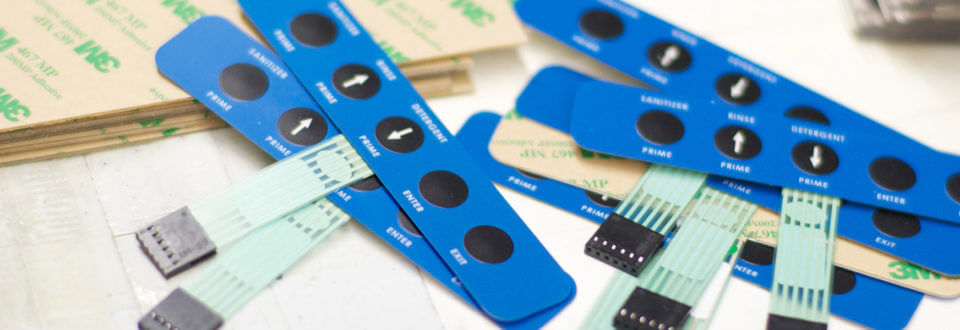The Impact of Membrane Switches on User Interface and Device Functionality
Wiki Article
Comprehending Membrane Layer Switches: The Trick to Long Lasting and Dependable Controls
Membrane layer switches stand for an important aspect of modern user interface layout, mixing functionality with strength in different applications. These versatile parts not only assist in user interaction but are additionally crafted to hold up against the rigors of requiring environments, from medical devices to industrial machinery. Recognizing their construction, procedure, and the myriad benefits they use is important for engineers and developers alike. As we explore the complexities of membrane layer buttons, it comes to be clear that their duty in improving control systems is both complex and profound, increasing inquiries concerning just how best to leverage their capabilities in future innovations.
What Are Membrane Switches?
Membrane switches are an innovative option in the world of interface innovation, integrating performance and design seamlessly. These devices act as an interface between individuals and electronic systems, incorporating numerous components right into a small layout. Usually built from flexible, slim layers of materials, membrane switches are made to respond to touch, enabling individuals to engage with machinery and electronic tools properly.The primary elements of a membrane button consist of a published circuit layer, graphic overlay, and a spacer layer that protects against unplanned activation. The visuals overlay can be personalized to show brand name identification or customer preferences, improving aesthetic appeals while making sure functionality. Membrane switches are typically made use of in numerous applications, consisting of medical tools, customer electronic devices, and commercial devices, owing to their durability and resistance to ecological aspects such as dampness and dust.
One of the crucial advantages of membrane buttons is their ability to withstand wear and tear, making them optimal for high-traffic atmospheres. In addition, they are lightweight and require very little area, enabling ingenious styles in product growth. In general, membrane layer changes represent a useful and effective option for modern electronic user interfaces, marrying modern technology with user-centric design concepts.

Just How Membrane Switches Over Job
The operation of membrane layer changes hinges on a simple yet effective mechanism that translates customer input right into electronic signals. When a user presses the button, the leading layer warps, allowing a conductive aspect in the circuit layer to make contact with a matching conductive pad on the underside of the graphic overlay.The design of membrane buttons can differ, yet they usually incorporate domes or responsive elements to give feedback to the user, boosting the overall experience. The materials used in membrane buttons, such as polyester or polycarbonate, add to their sturdiness and resistance to environmental factors, consisting of dampness and dust. Furthermore, the published circuits are usually encapsulated, which shields them from damage with time.

Benefits of Membrane Switches
Among the main advantages of membrane switches is their flexibility in style, allowing them to be personalized to fulfill certain customer needs and aesthetic requirements. This versatility encompasses numerous industries, where various forms, sizes, and colors can be utilized to enhance user interaction and aesthetic appeal.Additionally, membrane buttons are understood for their resilience. Built from durable products, they are immune to dust, moisture, and physical wear, which significantly prolongs their lifespan contrasted to standard mechanical buttons. This durability makes them specifically suitable for high-traffic atmospheres and applications needing durability.

Moreover, membrane buttons provide a structured account, bring about a thinner design that can be visit this page incorporated right into various tools without including mass. This function not only improves the aesthetic allure however also adds to a more ergonomic item style.

Applications of Membrane Buttons
User-friendly and functional, membrane switches locate applications across a vast array of markets, including clinical gadgets, consumer electronics, and commercial equipment. In the medical field, these buttons are important to devices such as analysis devices, person tracking systems, and mixture pumps, where reliability and simplicity of cleaning are essential. Their capacity to hold up against extreme settings and maintain functionality makes them perfect for such applications.In consumer electronics, membrane layer switches are used in products like microwaves, washing devices, and remotes - membrane switch. Their sleek design permits intuitive interface, boosting the overall customer experience while providing sturdiness and resistance to use and tear
Commercial equipment also gains from membrane layer buttons, specifically in control panels check this for machinery and automation systems. These buttons supply defense against dirt and wetness, ensuring regular performance in difficult environments. Their customizable functions enable suppliers to tailor them to particular operational needs, improving effectiveness and performance.
Selecting the Right Membrane Change
When choosing a membrane layer switch, it is necessary to take into consideration various elements that affect efficiency and suitability for specific applications. The key factors to consider include ecological conditions, responsive responses, durability, and layout requirements.
First, evaluate the operating atmosphere; buttons exposed to dampness, chemicals, or extreme temperature levels need certain products to make certain durability and functionality. Next off, review the requirement for responsive responses. Relying on customer interaction, some applications might take advantage of a tactile action to confirm activation, while others might like a non-tactile layout for aesthetic factors.
Durability is one more vital element; membrane buttons must be created to endure constant usage, impacts, and abrasion. Ensure the chosen button can withstand the expected lifecycle, particularly in high-usage scenarios.
Verdict
In conclusion, membrane layer switches function as essential parts in the style of reputable and resilient control systems throughout this post different industries. Their small style, combined with robust construction and adjustable features, enhances individual interaction while guaranteeing durability popular atmospheres. The adaptability of membrane layer changes enables customized services that meet details operational demands, enhancing their importance in contemporary innovation. membrane switch. As industries continue to advance, the value of integrating effective membrane layer switch options can not be overstated.Membrane layer switches represent a vital facet of modern-day user interface layout, mixing functionality with strength in numerous applications.Membrane layer switches are an advanced solution in the world of customer interface technology, incorporating capability and layout flawlessly. Generally created from flexible, slim layers of materials, membrane layer buttons are designed to react to touch, making it possible for users to connect with machinery and digital gadgets successfully.
The design of membrane buttons can differ, but they typically incorporate domes or responsive aspects to offer comments to the user, improving the overall experience.In final thought, membrane changes serve as important elements in the design of trustworthy and durable control systems across various sectors.
Report this wiki page